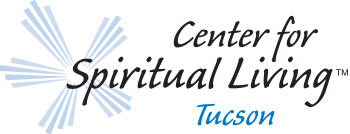A Pot of Gold Consciousness by Rev. Rhoni
 “Yes, you can have it all!!” Was the “consciousness cry” of the 80’s for Religious Science. Many of us concentrated on manifesting partners, palaces and parking places. Manifesting our hearts desire, proof that the power of the mind and the Divine does in fact work. In the Christian dogma there is now the “Prosperity Gospel” (Abundance Good News). Something metaphysicians have always practiced. However, has this consciousness changed? I have been a lifetime member of Religious Science, and I have been a witness and a participant in all the metamorphosis our philosophy continues to experience. I have watched other faith traditions embrace what we already have as a spiritual practice, of knowing “It’s my good, and I ought to have it” said Emma Curtis-Hopkins with conviction.
“Yes, you can have it all!!” Was the “consciousness cry” of the 80’s for Religious Science. Many of us concentrated on manifesting partners, palaces and parking places. Manifesting our hearts desire, proof that the power of the mind and the Divine does in fact work. In the Christian dogma there is now the “Prosperity Gospel” (Abundance Good News). Something metaphysicians have always practiced. However, has this consciousness changed? I have been a lifetime member of Religious Science, and I have been a witness and a participant in all the metamorphosis our philosophy continues to experience. I have watched other faith traditions embrace what we already have as a spiritual practice, of knowing “It’s my good, and I ought to have it” said Emma Curtis-Hopkins with conviction.
In the face of our current existence, we are bombarded by the financial stability of our country. Which I understand for me is to also look at my prosperity consciousness. There is a revelation a foot. A mirror reflecting to me, do I feel impoverished in my life? Or do I feel full and accept everything and “all that I need comes to me?” Abundance consciousness is not about money, it is about how we live. Sure, money creates things to be easy and carefree, no worries etc., but what about the other facets of our lives?
Ernest Holmes said, God wills us to have everything. As we express life, we fulfill God’s law of abundance, but we do this only as we realize that there is good enough to go around-only as we know that all of God’s gifts are given as freely and fully as the air and the sunshine.
I understand it as most people, probably feel somewhat comfortable with their present beliefs, and might prefer to stay at the present level of consciousness and at the present level of life it provides, rather than spending the energy to change your consciousness, and our life. The question deep down is, “Do we want something more? To have a different experience of this life we have currently chosen? How about giving yourself permission to want a different experience and totally change it! Jacob Needleman a professor of mine while studying at the University of Philosophical Research said, Our modern world-view tragically misperceives and wrongly defines what it is to be human. We are conditioned by our society to believe happiness comes from pleasure, or from getting things or power over people or money or fame or even health and survival. None of these sometimes very good things can bring ultimate meaning to our lives. We are born to be deeply conscious, inwardly free and deeply capable of love. The longing for these things is the definition of what it means to be human. Yes, we are human. It is important to note, although it is nice to have material “things”, it is not our source or our supply. God-in-me is the Source and Substance of my highest good throughout my life experience. We are, prosperous as love as the Divine lives and breathes and has its being through me and you. Is it really about the material we want to live in? Or is it about our relationship with our Highest Source? When we live in the consciousness of abundance of our entire life, WILL BE THAT EXPERIENCE. Through our mind in action, we embrace the mantra, “God is my source, God is my supply.” When we live in that mind set, IT IS. This month I will be speaking each Sunday on the topic of abundance as we explore together what it really “feels” like to live in an abundant universe. I hope you will join us either on YouTube or in person at 11 am on Sundays.
–Namaste, Rev. Rhoni













